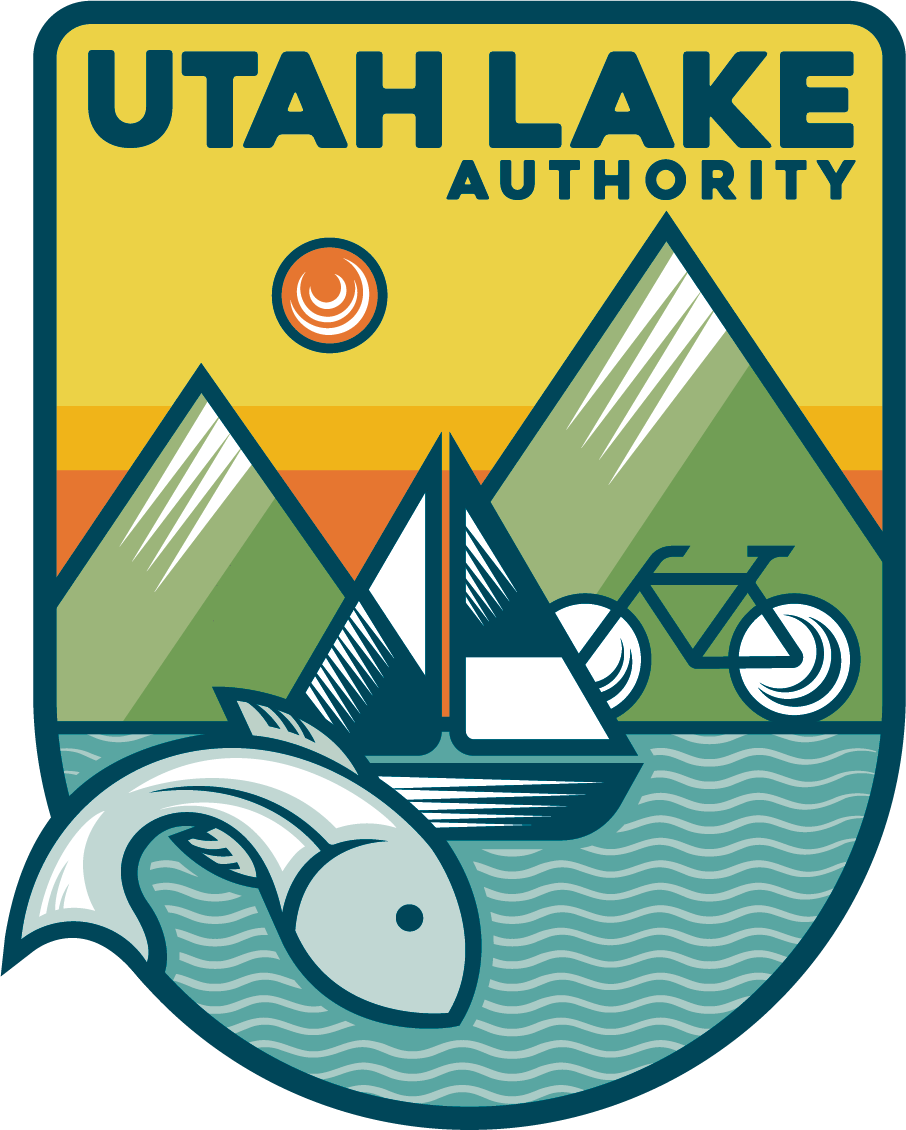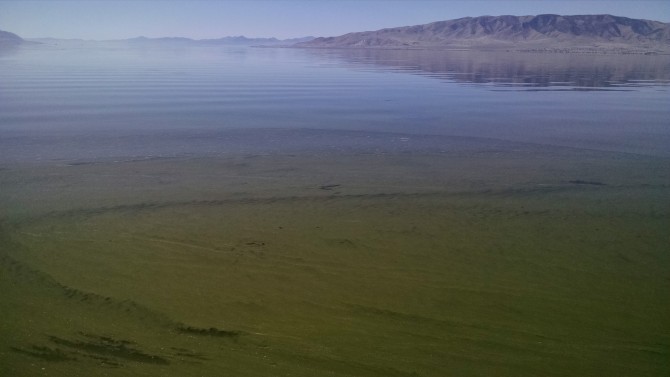Utah Lake is a highly eutrophic lake. That means it’s rich in nutrients like phosphorus and nitrogen. You may recognize these compounds as fertilizers that will help your grass to grow healthy and green and helps your garden be more productive. Plants love them! When there is plenty of fertilizer, it’s like an all-you-can-eat buffet for plants.
Well, the same thing can happen to certain plants in water bodies. When perfect conditions exist such as calm water, lots of sunlight, and enough nutrients, an algae bloom can occur. This sometimes happens in the late summer/early fall months on Utah Lake and usually just lasts a week or two. These blooms are the main reason that some people incorrectly think the lake is always polluted and avoid using it.
Unfortunately, this natural phenomenon is difficult to predict and control. Often these algae blooms are just a nuisance. However, if the algae growth is from Cyanobacteria (blue-green algae), a toxin that is dangerous to humans and animals is sometimes produced.
It appears that those conditions were met over this past weekend. We received a report from a citizen who said that while playing fetch with their dog near the Lindon Marina, their dog began experiencing some unusual behavior including vomiting. Sadly, the dog passed away soon after. Fortunately, we were informed and were able to contact both state and county authorities to alert them of this serious health concern.
The Utah County Health Department, after consulting with biologists and phycologists, has issued a health advisory regarding this bloom. You can access it here.
In the advisory, it was stated that “[i]ndividuals should not swim or boat in areas of bright green water.” Pretty wise advise, even if it isn’t bright green, if you ask me…
But don’t fear. Within a short time, conditions will change and it will be safe to recreate in the lake once again. In the meantime, take some time to enjoy a stroll along the sandy beaches that are exposed due to the low water level or try some of these activities that don’t require getting into the water.
Feature Photo taken 10/6/2014


In the official KSL report it’s clear that these algae blooms can and should be mitigated by reducing the amount of nutrients coming into the lake from water treatment plants.
This is a serious enough issue that it would be great to see the Utah Lake Commission collaborating/encouraging where possible, the continued work of the Utah Department of Water Quality in it’s work to reducing the nutrient levels coming into the lake. Dogs dying and people getting seriously sick is not acceptable nor is it good press for the lake.
“75 percent of the nutrients could be prevented from flowing into the lake.The nutrients come from local waste water treatment plants,” Walt Baker with the Utah Department of Water Quality said.